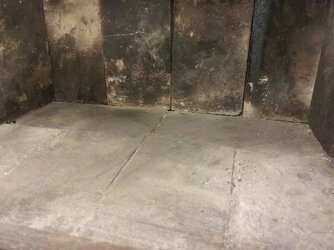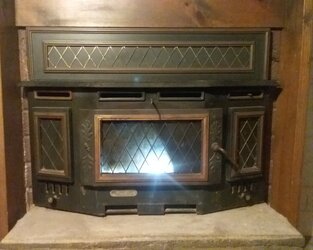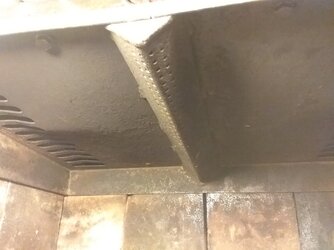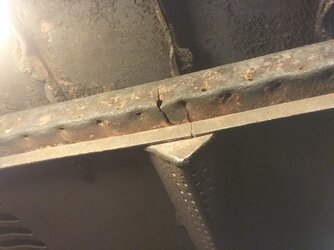Unusual situation. Renting a house with granite floors outside the USA with a 1985 Country Comfort CC100 installed as the only heat source. The house remains 10 degrees Farenheit below the outside temperature at all times. As I am renting, I cannot change out the unit and the absentee owner rented it out without knowing if the fireplace worked. A good stock of seasoned dry firewood in a storage room gave me promise.
I scoured all information available throughout the Internet on this model. I have inspected the chimney top to bottom via camera and disassembled the interior, cleaned all, and replaced the decrepit original fire wool that was clogging the vents around the secondary combustion chamber with modern ceramic insulation. I am currently rebuilding the 1.05 amp blower motor as it was inoperable from disuse or material contamination from not being maintained since 1985. There is a printed warning on the data plate of the blower housing, "Warning - risk of smoke and flame spillage, operate only with doors fully open or closed."
In addition to the opening door and the flue control, there is a closable sliding door on the upper right of the unit and two spring-loaded air control doors at the base of the unit on each side of the electric blower option. Since I do not know the proper fire starting procedure, I wind up with my started fires dying out from lack of airflow once the door is closed. There is great draft. There are no obstructions. Wood is good and dry. I simply need to know which doors to open and close and when.
I know that these units are famous for smoking, but Americans installed this professionally years ago and I am certain that it worked well. I just don't know how to start it. Any and all help and guidance with starting and maintaining the fire will be greatly appreciated.
I scoured all information available throughout the Internet on this model. I have inspected the chimney top to bottom via camera and disassembled the interior, cleaned all, and replaced the decrepit original fire wool that was clogging the vents around the secondary combustion chamber with modern ceramic insulation. I am currently rebuilding the 1.05 amp blower motor as it was inoperable from disuse or material contamination from not being maintained since 1985. There is a printed warning on the data plate of the blower housing, "Warning - risk of smoke and flame spillage, operate only with doors fully open or closed."
In addition to the opening door and the flue control, there is a closable sliding door on the upper right of the unit and two spring-loaded air control doors at the base of the unit on each side of the electric blower option. Since I do not know the proper fire starting procedure, I wind up with my started fires dying out from lack of airflow once the door is closed. There is great draft. There are no obstructions. Wood is good and dry. I simply need to know which doors to open and close and when.
I know that these units are famous for smoking, but Americans installed this professionally years ago and I am certain that it worked well. I just don't know how to start it. Any and all help and guidance with starting and maintaining the fire will be greatly appreciated.


 .
.


